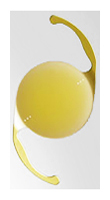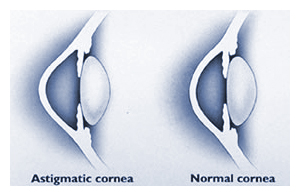Pittsburgh Eye Institute is now using the Catalys Precision Laser System
A cataract is a common condition in which the normally clear lens of the eye becomes increasingly cloudy. Compared to vision with a clear lens, your vision with a cataract may look fuzzy, colors might be muted, and you may experience difficulty reading signs while driving at night. The symptoms of cataracts are progressive and can not be corrected with glasses or contacts. When symptoms become bothersome or limit your daily activities, it’s time to consider treatment. Treatment for cataracts involves removal of the cataract and replacement with an artificial lens that can restore clear vision.
The CATALYS® Precision Laser System is indicated for use in patients undergoing cataract surgery for removal of the crystalline lens. Intended uses in cataract surgery include anterior capsulotomy, phacofragmentation, and the creation of single plane and multi-plane arc cuts/ incisions in the cornea, each of which may be performed either individually or consecutively during the same procedure.
Procedures: Cataract Surgery
No Injection, No Stitch, No Patch and possibly No Glasses. Why is this important?
“No Injection” means the eye is anesthesized with anesthetic drops. Eye drop anesthesia allows patients to see well within minutes after surgery. Since there are no needle injections around the eye, the risk of a needle damaging the optic nerve, or the eye itself, is eliminated. In addition, eye drop anesthesia is beneficial for patients who are taking blood thinners for the prevention of strokes and blood clots. Our patients can continue their blood thinners, even when having surgery.
“No Stitch” means a self-sealing, microsurgical incision is used. Dr Findlan uses a process called “phacoemulsification” to remove the cataract. A small instrument enters the eye through a tiny incision, emulsifies or fragments the cataract, and gently vacuums it away. Most of the time, this tiny self-sealing incision requires no uncomfortable stitches. Another benefit is limited post-operative restrictions!
“No Patch” means literally just that. Using these advanced techniques, no uncomfortable patches that obstruct vision are necessary. Vision usually returns within minutes to hours after surgery. This is especially important to patients who do not have good vision in their fellow eye. Many patients may bowl or golf within a few days after their cataract surgery.
“No Glasses” means more freedom. Through a careful process of pre-operative measurements using the latest technology and through careful selection of each lens implant, Dr Findlan reduces the need for glasses after the surgery. This “customizing” of the outcome for each eye can allow the patient to see well at distance and at near with minimal need for glasses. Further refining of the outcome for each eye can possibly allow the patient to see well at distance without the need for glasses. In addition, precise refinement of the outcome may be achieved with High Definition LASIK. Our happiest patients are those that experience not only improvement of impaired vision but also the restoration of the long lost freedom; the freedom to see without glasses. Glasses may still be necessary for some patients who participate in activities that require the finest vision for distance or near. AcrySof Toric Lens Implant
AcrySof Toric Lens Implant
The AcrySof Toric lens is designed to reduce corneal astigmatism and improve uncorrected functional distance vision. The AcrySof Toric lens offers these advantages over traditional lens implants:
- Correction of corneal astigmatism
- Enhanced clarity and quality of uncorrected distance vision.
- Filtered blue light protection
- Rich, vibrant color perception
The AcrySof Toric lens is ideal for patients who wish to be corrected for distance vision and are comfortable wearing glasses. Because this lens does not offer the ability to accommodate or adjust one’s vision to varying distances, glasses would be required for near and intermediate tasks for people who have this implant.
The AcrySof Toric lens implant is also an excellent choice for those who drive a lot at night, as it delivers great clarity with minimal reports of glare or haloes under both bright and dim lighting conditions.

Corneal Astigmatism:

 Whether myopic or hyperopic, most eyes have corneal astigmatism to some degree. Corneal astigmatism means that the front part of your eye, the clear window you look through, is not perfectly round. Instead of being spherical like a basketball, an astigmatic cornea is slightly flattened, more oval in shape like a football, with one side steeper than the other (as illustrated above).
Whether myopic or hyperopic, most eyes have corneal astigmatism to some degree. Corneal astigmatism means that the front part of your eye, the clear window you look through, is not perfectly round. Instead of being spherical like a basketball, an astigmatic cornea is slightly flattened, more oval in shape like a football, with one side steeper than the other (as illustrated above).
Because the astigmatic cornea is curved more (steeper) in one direction than the other, light entering the eye is refracted differently as it passes through these different areas. This causes light to come into focus at several different points on the back of the eye, rather than ideally coming into focus at just one point (note the illustration, right).
Depending on the direction and the amount of astigmatism, vision through an astigmatic cornea will be affected in various ways.
Advantages of the AcrySof Toric Lens Implant
- The AcrySof Toric intraocular lens is designed to correct for nearsightedness or farsightedness and
corneal astigmatism of the human eye. - The AcrySof Toric intraocular lens is designed to have the lens capsule “shrink wrap” around it.
- This helps the lens stay stable and centered within the eye.
- The patented yellow color of the AcrySof Toric intraocular lens implant is biocompatible and bonded
to the structure of the acrylic material. - The yellow color of the AcrySof Toric intraocular lens implant, approximates the natural discoloration
(i.e., natural yellowing) of a healthy adult crystalline lens, without a negative impact on color perception. - The AcrySof Toric intraocular lens implant is compatible with secondary cataract treatment
(i.e., Nd:YAG laser treatment), if required.
The AcrySof Toric lens is available in a wide range of optical powers that effectively correct eye that are nearsighted and farsighted. As each patient is unique, both in physiology and in viewing distance preferences, the correct power intraocular lens for your cataract surgery will be selected using biometry equipment. An in-depth discussion of your needs and options will take place with Dr Findlan at the Pittsburgh Eye Institute.
Make your appointment today with the Pittsburgh Eye Institute, to see if the AcrySof Toric lens for the correction of astigmatism is right for you. If you would like further information, please call our office at: 412-382-7155
